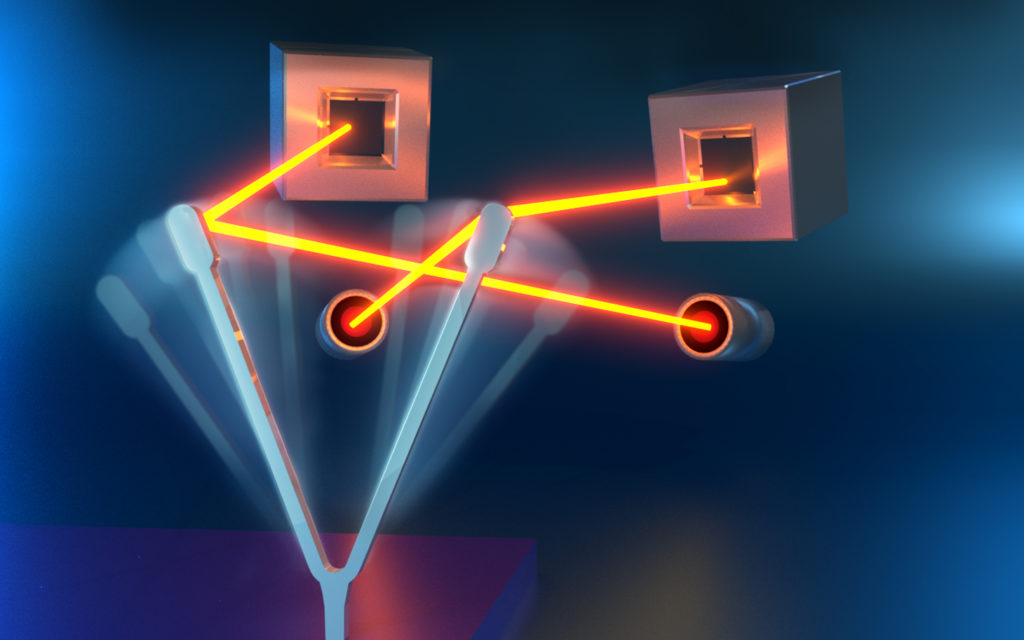Congratulations to the ViaBus Application, developed by alumni of Chula Faculty of Engineering, for winning Thailand’s Design Excellence Award (DEmark) 2023 in the category of Systems, Services, Digital Platform, Online Interface Design, Apps for Smartphones and Tablets, Website.
Tag: Navigation

How the Brain’s Internal Compass Guides the Body
A study in fruit flies reveals how the brain’s compass and steering regions make course corrections
New app developed at NYU Tandon School of Engineering promises to make navigating subway stations easier for people with blindness and low vision
Designed by researchers at NYU Tandon School of Engineering and NYU Grossman School of Medicine, Commute Booster routes public-transportation users through the “middle mile” – the part of a journey inside subway stations or other similar transit hubs – in addition to the “first” and “last” miles that bring travelers to and from those hubs.
WVU space robotics research helps Mars rovers find their footing
West Virginia University scientists have developed a way for extraplanetary rovers to use nonvisual information to maneuver over treacherous terrain. This will help to prevent future losses of expensive equipment like that of the Martian exploration rover Spirit, which ceased communications after its wheels became trapped in invisibly shifting sands in 2010.
Technology helps self-driving cars learn from own memories
Researchers at Cornell University have developed a way to help autonomous vehicles create “memories” of previous experiences and use them in future navigation, especially during adverse weather conditions when the car cannot safely rely on its sensors.
The goal in mind
Animals including rodents and humans can navigate to a desired location by relying on the brain’s internal cognitive map.
This device could usher in GPS-free navigation
Sandia National Laboratories has created the first device that is small, energy-efficient and reliable enough to potentially move quantum sensors — sensors that use quantum mechanics to outperform conventional technologies — from the lab into commercial use.
NIH-funded modern “white cane” brings navigation assistance to the 21st century
Equipped with a color 3D camera, an inertial measurement sensor, and its own on-board computer, a newly improved robotic cane could offer blind and visually impaired users a new way to navigate indoors.
New Neuronal Code Found in Bats Navigating Extra-Large Spaces, Weizmann Institute Scientists Report
To date, place cells have been studied in mammals in small spaces. How do we navigate large ones? Prof. Nachum Ulanovsky and team studied bats navigating a 200-m-long tunnel – and discovered a novel neuronal code for spatial perception. The work showed that place cells behave completely differently when navigating very large spaces.
Independent on the Ground
Researchers have developed a mapping system for visually impaired pedestrians in urban spaces. The technology weighs the environmental and semantic data important to the visually impaired, and emphasizes safe, accessible, and navigable routes.

Story tips from the Department of Energy’s Oak Ridge National Laboratory, November 2019
ORNL and NREL took demonstrated a miniaturized gyroscope. ORNL created and tested new wireless charging designs. If humankind reaches Mars this century, an ORNL-developed experiment testing advanced materials for spacecraft may play a key role. ORNL and Georgia Tech found that critical interactions between microbes and peat moss break down under warming temperatures. ORNL and industry demonstrated that an additively manufactured hot stamping die can withstand up to 25,000 usage cycles.